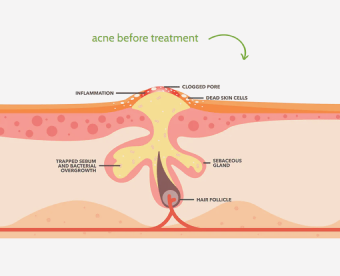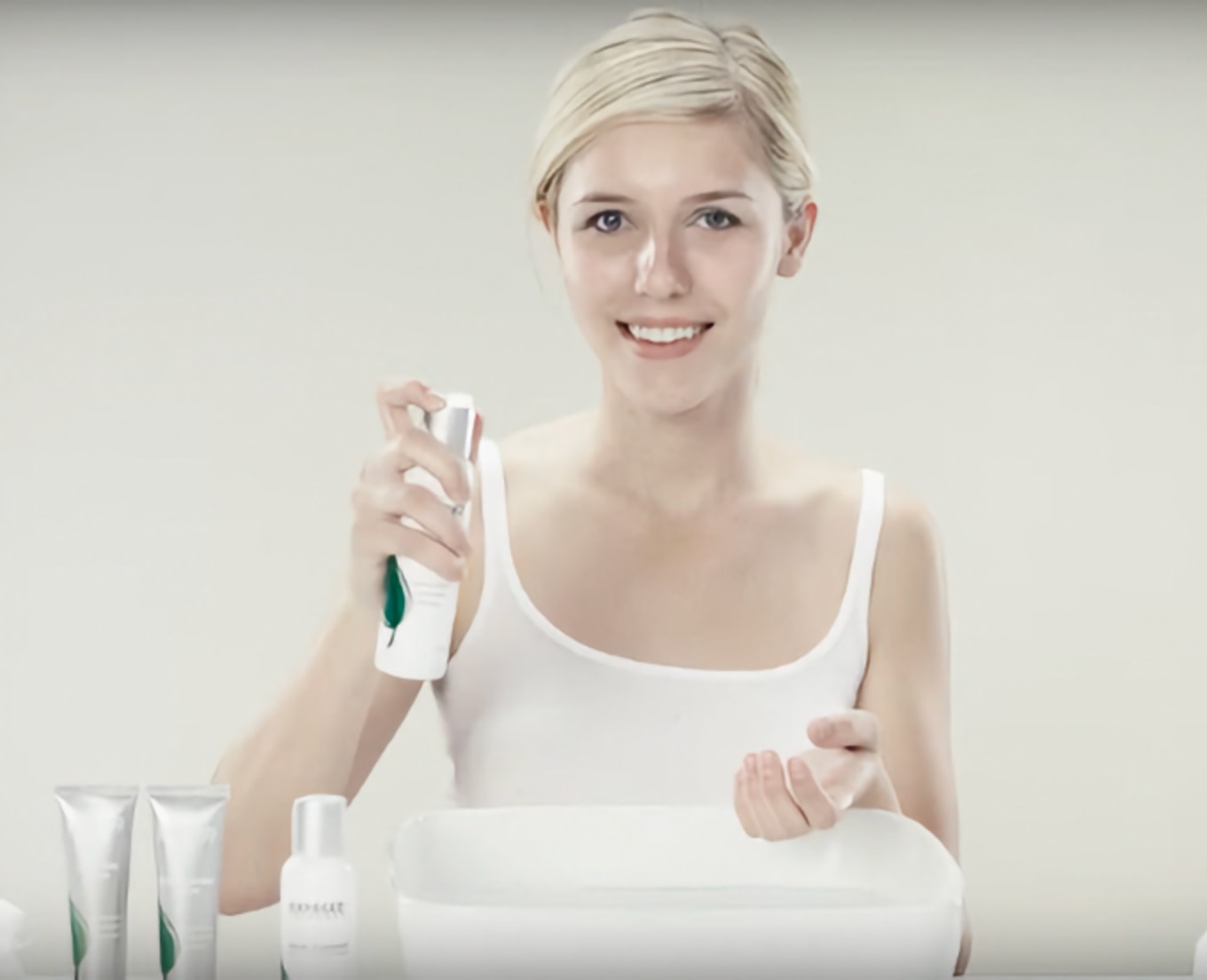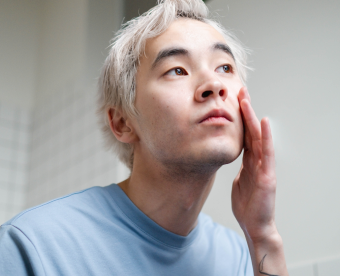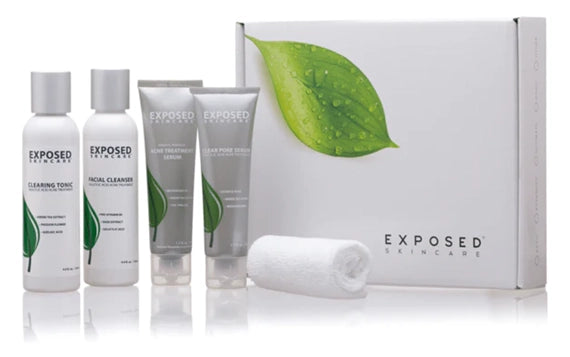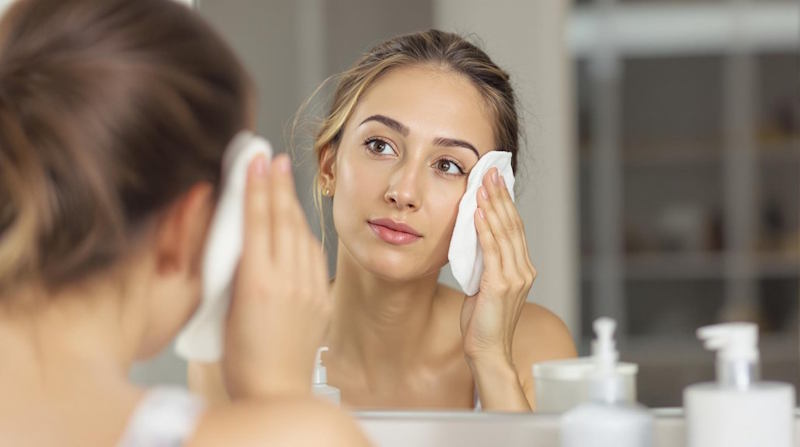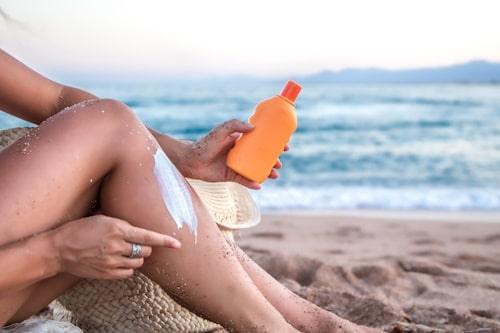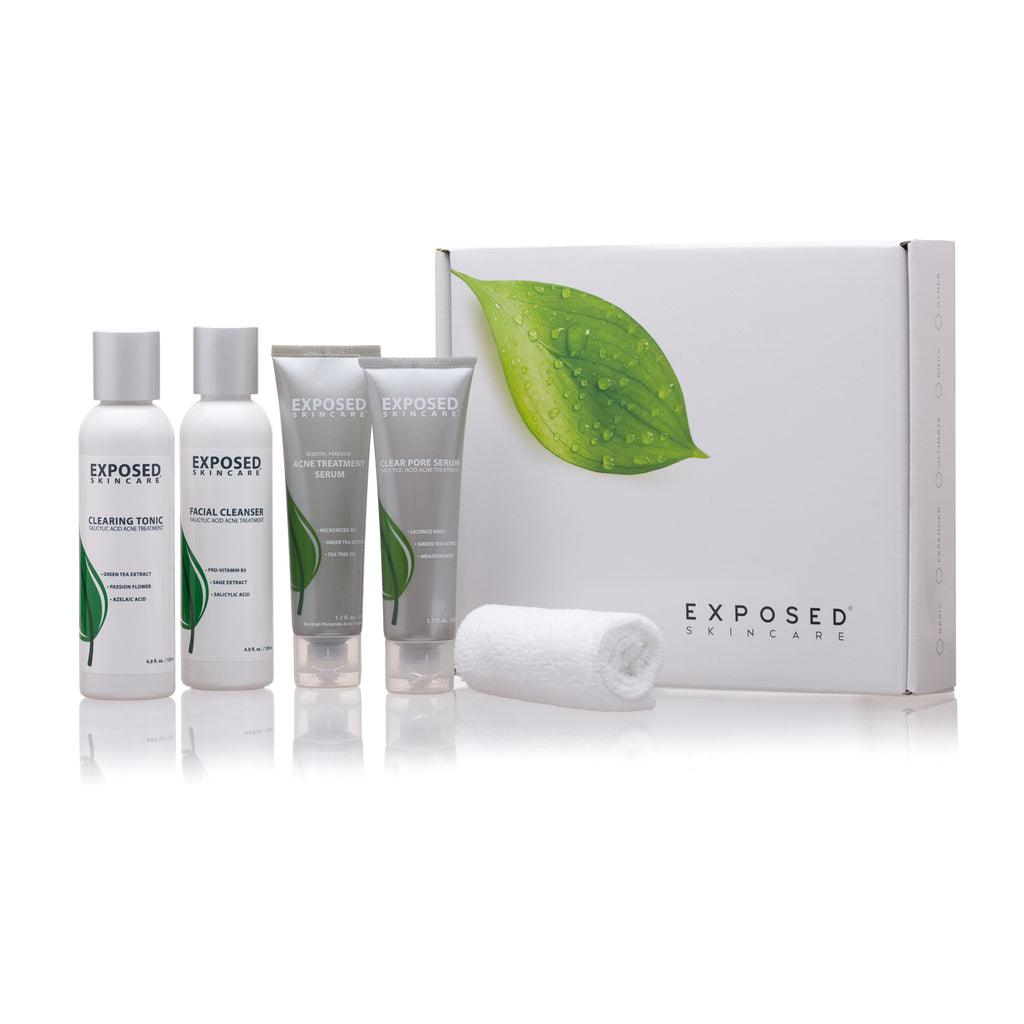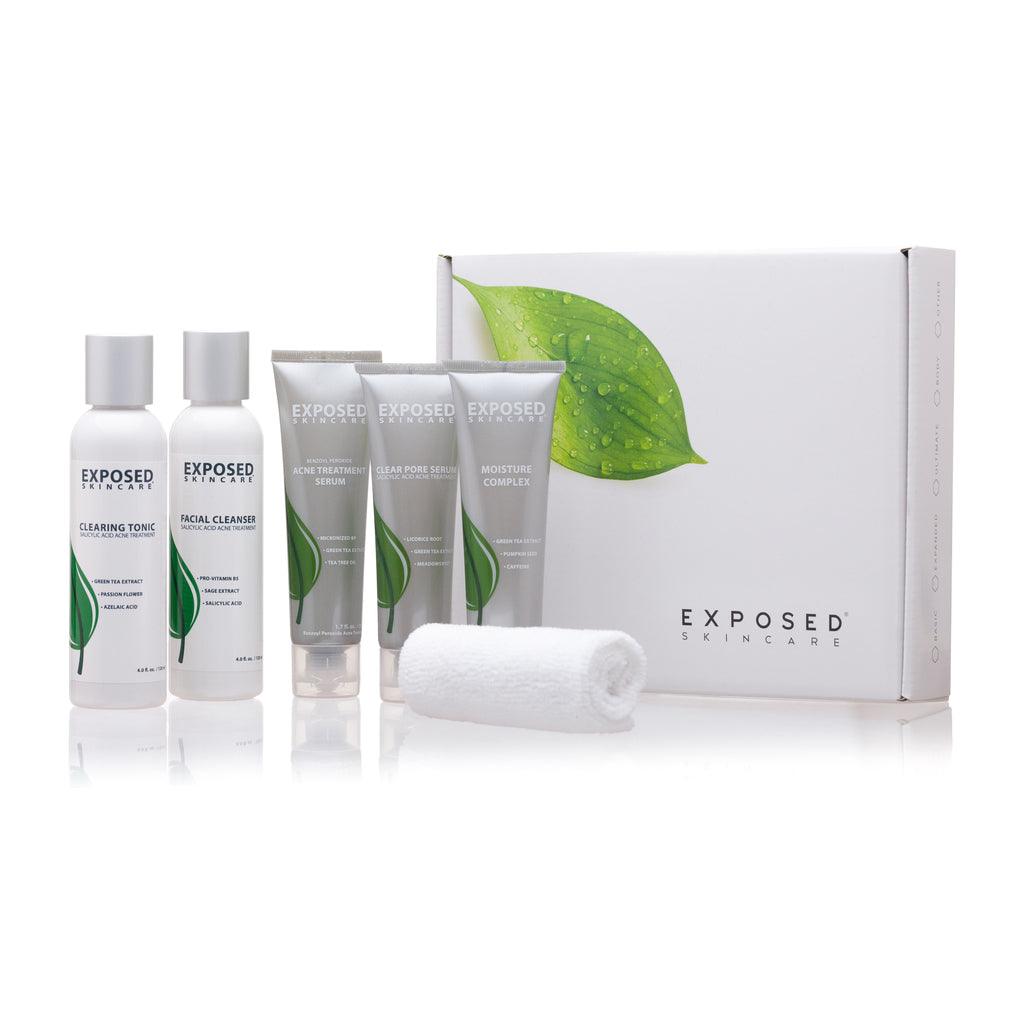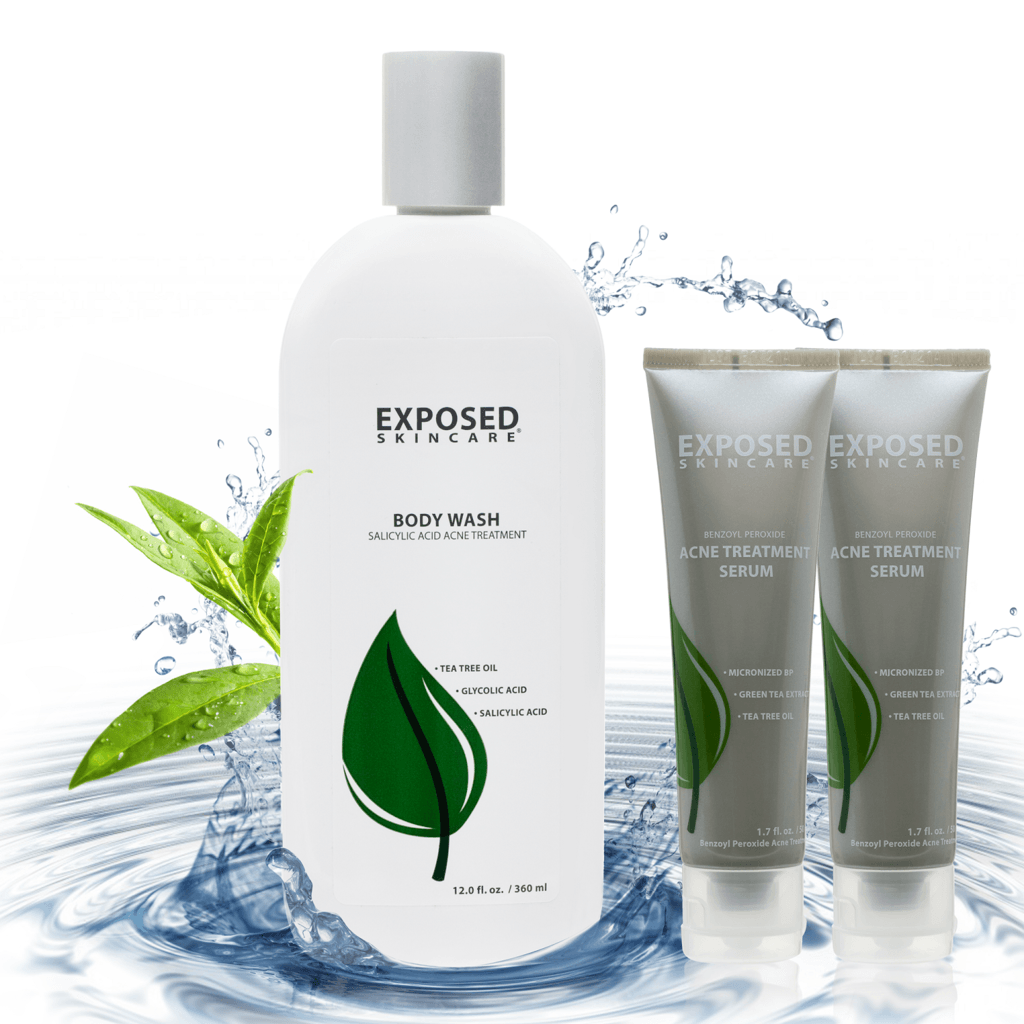While antibiotic ointments might zap some acne bacteria, they're basically one-trick ponies that miss the bigger picture. They don't touch excess oil, clogged pores, or lasting inflammation—plus they create super-bacteria with continued use. Exposed Skin Care attacks all four acne drivers simultaneously with ingredients like benzoyl peroxide and salicylic acid, without the resistance issues. Your face deserves more than a half-baked solution that only addresses 25% of the problem.
Biggest Takeaways
- Antibiotic ointments target bacteria but ignore other acne causes like oil production and clogged pores.
- Long-term antibiotic use can lead to bacterial resistance and possible skin irritation.
- Exposed Skin Care combines multiple ingredients to address all acne drivers simultaneously.
- Benzoyl peroxide in Exposed remains effective without creating resistance like antibiotics can.
- Users report clearer skin within three weeks using Exposed's comprehensive system versus antibiotics alone.
Why People Turn to Antibiotic Ointments for Acne

When your face erupts in angry red bumps, it's tempting to reach for something—anything—that promises to nuke those pimples fast. That's why so many of us grab antibiotic ointment for acne in desperate moments.
Desperate times call for desperate measures—like attacking innocent pimples with antibiotic warfare when your face revolts.
Let's be real: those tubes of clindamycin or erythromycin seem like miracle workers. They target Cutibacterium acnes bacteria and dial down inflammation, making them a go-to for anyone who's frantically Googling "how to zap zits overnight."
You're not alone if you've slathered antibiotic ointment on your breakouts hoping for that quick fix. The immediate relief can feel validating—like you've finally found your skin's secret weapon.
But here's the kicker: while these treatments might work initially, they're basically the one-hit wonders of the skincare world.
How Antibiotic Ointments Affect the Four Acne Drivers
Although antibiotic ointments might seem like the silver bullet for your acne woes, they're actually just taking a swing at one piece of a much bigger puzzle.
These products mainly target bacteria (specifically C. acnes) while completely ignoring the other three acne drivers that are probably still partying on your face.
Here's what antibiotic ointments miss:
-
Oil production - They do zilch for your overactive sebaceous glands
-
Clogged pores - Those dead skin cells? Still hanging around, blocking everything up
-
Inflammation - They help temporarily, but don't address the root causes of redness and swelling
While your derm might prescribe these for short-term use, relying solely on antibiotic ointments is like trying to fix a four-flat-tire situation by only pumping up one wheel.
Not exactly a winning strategy.
The Hidden Risks of Using Antibiotic Ointments Long-Term

The antibiotics craze for acne might seem like a quick fix, but there's a dark side your drugstore doesn't advertise on those tiny tubes.
Here's the tea: your skin bacteria are getting smart. With continued use, C. acnes bacteria develop resistance to those antibiotics—not just for you, but potentially for your close contacts too. Yikes.
About 1-6% of users end up with irritation or allergic reactions, especially from ingredients like neomycin in products such as Neosporin.
Let's be real—these ointments aren't even that good at clearing acne compared to ingredients like benzoyl peroxide and salicylic acid (which, btw, are cornerstone ingredients in Exposed's system).
Why gamble with resistance when better options exist?
Why Exposed Skin Care's Multi-Ingredient Approach Works Better
Instead of playing antibiotic roulette with your skin, let's talk about why hitting acne from multiple angles actually makes sense. Antibiotics target bacteria alone, leaving the other acne troublemakers partying on your face. That's why Exposed's multi-ingredient approach crushes it—it's like sending in a SWAT team instead of a single officer.
-
Comprehensive attack - Exposed combines benzoyl peroxide, salicylic acid, and soothing botanicals to tackle bacteria, excess oil, clogged pores, and inflammation simultaneously.
-
No resistance issues - Unlike antibiotics that bacteria can outsmart, benzoyl peroxide stays effective without creating superbugs.
-
Full-spectrum support - Beyond just zapping zits, the system balances your skin with complementary products that work together.
The truth? Your pimples don't stand a chance when you're hitting them from all sides.
Real Results: Customer Success Stories With Exposed's Complete System
When skeptics roll their eyes at yet another acne product promising miracles, Exposed's customer transformations actually shut them up pretty fast.
Unlike those antibiotic ointments that work temporarily at best, people are posting before-and-afters that'll make you do a double-take.
"I tried everything from prescription meds to TikTok hacks before discovering Exposed," shares one customer whose progress photos look like different people. "Clear skin in three weeks without the dryness and redness!"
What's particularly telling? Users aren't just clearing current breakouts—they're staying clear.
That's because Exposed tackles all four acne drivers simultaneously, not just bacteria. The system's gentle-but-effective formula means you're not trading acne for irritation like with harsh antibiotics.
You're finally joining the clear-skin club, not just visiting.
Frequently Asked Questions
Is It Good to Put Antibiotic Ointment on Acne?
No, antibiotic ointments aren't ideal for your acne. They don't target the right bacteria and may cause irritation. You'll see better results with products containing benzoyl peroxide and salicylic acid.
Which Antibiotic Works Fastest for Acne?
Tetracycline and doxycycline work fastest, showing results in about 6 weeks. But you'll see quicker improvement with Exposed's complete system that targets all four acne drivers simultaneously.
How Long Does It Take for Topical Antibiotics to Work on Acne?
While you're waiting 6-8 weeks for topical antibiotics to maybe work, you could already be enjoying clearer skin. You'll see results in under 30 days with Exposed's system that targets all four acne drivers simultaneously.
Can Acne Become Resistant to Topical Clindamycin?
Yes, your acne can become resistant to topical clindamycin over time. That's why many dermatologists recommend combination treatments that target all four acne drivers simultaneously for lasting results.
Putting It All Together
You're fundamentally putting a bandaid on a broken dam with antibiotic ointments. Instead of watching your face cycle between clear days and breakout storms, Exposed's system tackles acne from all angles. Picture your skin as a balanced ecosystem rather than a battleground. While no product works magic overnight, this thorough approach beats playing whack-a-mole with single-ingredient solutions. Your journey to clearer skin doesn't have to be an endless loop of disappointment.

